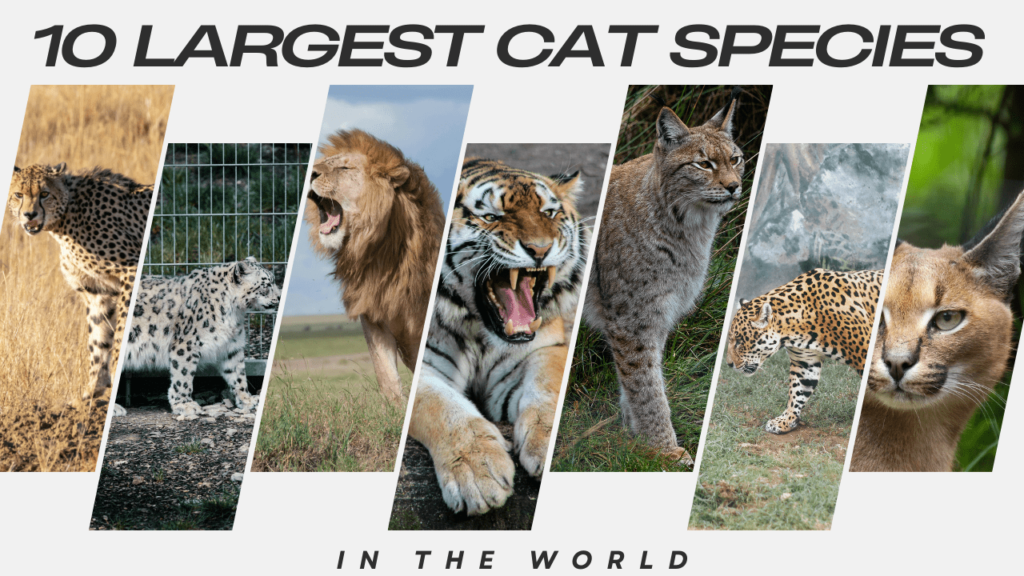Did you know that some animals can exert more force with their jaws than the weight of a small car? In the wild, a strong bite can mean the difference between life and death, making it one of the most formidable weapons in nature.
Bite force is not just about raw power; it plays a crucial role in an animal’s ability to survive and thrive. Whether it’s used to capture prey, defend against predators, or assert dominance within a group, the animal with the strongest bite often holds a significant advantage in its environment. This force reflects an animal’s evolutionary adaptations, ensuring they can crack open tough shells, crush bones, or deliver a fatal bite to their prey.
In this article, we’ll dive into the fascinating world of bite force to uncover what animal has the strongest bite force. We will explore various species, from reptiles to mammals, that possess the strongest bite force in the world. By the end, you’ll have a comprehensive understanding of the animals with the strongest bite and why these formidable forces of nature reign supreme in their respective habitats.
Don’t miss the ultimate quiz on the world’s strongest animal bites waiting for you at the end of this article!
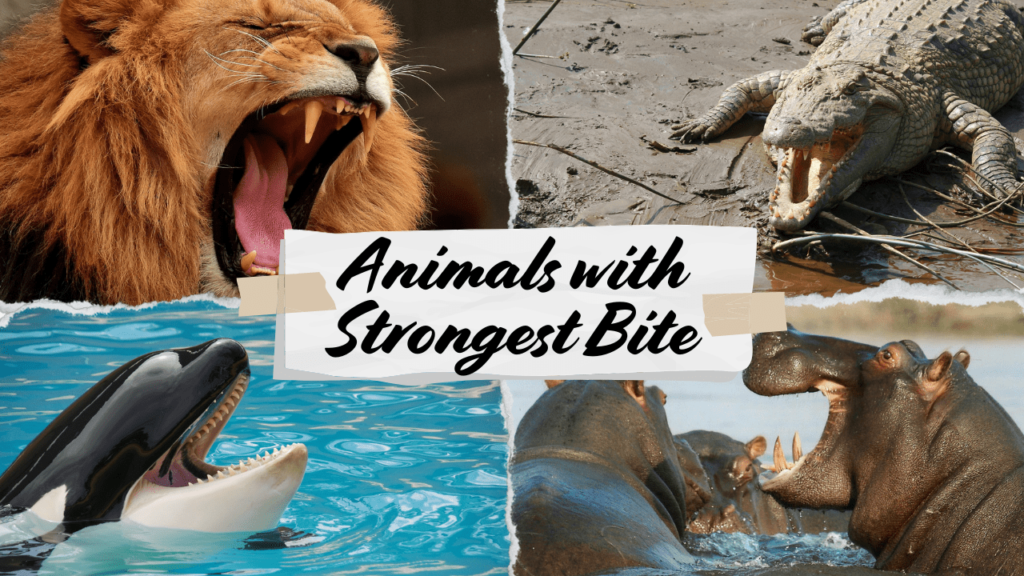
Understanding Bite Force
Definition: What is Bite Force?
Bite force refers to the amount of pressure an animal can exert with its jaws when biting down. It is typically measured in pounds per square inch (PSI), a unit that quantifies the force applied over a specific area. For example, if an animal’s bite force is measured at 1,000 PSI, it means that each square inch of its bite delivers 1,000 pounds of pressure. This measure gives us a clear understanding of the raw power behind an animal’s jaws.
Did You Know: Which big cat has the most crushing bite?
The Lion! With a bite force of 1,768 PSI, it can crush through skulls, a unique ability among big cats.
Surprising Fact: Can herbivores have strong bite forces?
Absolutely! The hippopotamus has an astonishing bite force of 1,800 PSI, making it one of the most dangerous animals despite its plant-based diet.
Understanding the Measurements:
Newtons (N):
A measure of force; in this context, it represents the amount of force exerted by the animal’s bite.
1 Newton is the force required to accelerate a mass of one kilogram by one meter per second squared.
PSI (Pounds per Square Inch):
A measure of pressure; in this context, it refers to the amount of pressure exerted by the bite over a square inch of area.
PSI is commonly used to quantify bite force in animals.
Importance of Bite Force in the Animal Kingdom
Bite force is a critical factor in the survival of many species. It plays a vital role in:
- Hunting: For predators, a strong bite is essential for capturing and killing prey. It allows them to deliver a fatal blow quickly, ensuring their meal doesn’t escape.
- Defense: Animals also use bite force to protect themselves from threats. A powerful bite can deter predators or rivals, serving as an effective defense mechanism.
- Feeding: Some animals need a strong bite to break through tough materials like bones, shells, or even tree bark to access food. For instance, crocodiles rely on their immense bite force to crush the bones of their prey, while certain rodents use their bite to gnaw through hard seeds and nuts.
In essence, bite force is a tool for survival, shaping an animal’s ability to hunt, defend, and feed in its environment.
Factors Influencing Bite Force
Several factors contribute to the strength of an animal’s bite:
- Jaw Structure: The design and mechanics of an animal’s jaw greatly influence its bite force. Animals with short, broad jaws tend to have stronger bites because their jaw muscles can apply more pressure over a smaller area. For example, a hyena’s powerful bite is due in part to its robust jaw structure.
- Muscle Strength: The muscles attached to an animal’s jaw are key players in generating bite force. Animals with larger, more developed jaw muscles can exert more force, leading to a stronger bite. This is why big cats like lions and tigers, known for their powerful bites, have highly muscular jaws.
- Diet: An animal’s diet also plays a role in developing bite force. Species that regularly consume hard or tough foods often evolve stronger bites to handle their diet. For instance, the saltwater crocodile, which preys on large mammals, has developed one of the most powerful bites in the animal kingdom to subdue its prey.
Together, these factors determine an animal’s ability to exert bite force, making it a crucial aspect of their adaptation and survival in the wild.
Did You Know: Which animal’s bite can break through bones with ease?
The spotted hyena! Its bite force of 1,100 PSI can crush through bones to access the nutritious marrow inside, making it a perfect scavenger.
Curious Fact: Which marine mammal has a surprisingly powerful bite?
The orca, or killer whale, with a bite force of 19,000 PSI, making it one of the strongest bite forces in the animal kingdom.
Human Bite Force:
A Benchmark for Understanding Animal Bite Strength
When discussing the bite force of various animals, it’s helpful to have a point of reference. The human bite, while not the strongest in the animal kingdom, provides a useful benchmark for comparison. Understanding the mechanics and strength of the human bite can offer insights into the extraordinary power found in some animals’ bites.

What is Human Bite Force?
The average human bite force is about 162 PSI, though it can vary depending on the individual, the part of the jaw being measured, and the specific conditions under which the bite occurs.
While humans don’t rely on their bite for survival as much as animals do, bite force is still important. It plays a role in chewing food, which is essential for digestion and nutrient absorption. Additionally, human bite force is sometimes utilized in defensive situations, although it’s far less significant in this regard than in many animals.
Top 15 Animals with the Strongest Bites
Animal #15: Spotted Hyena
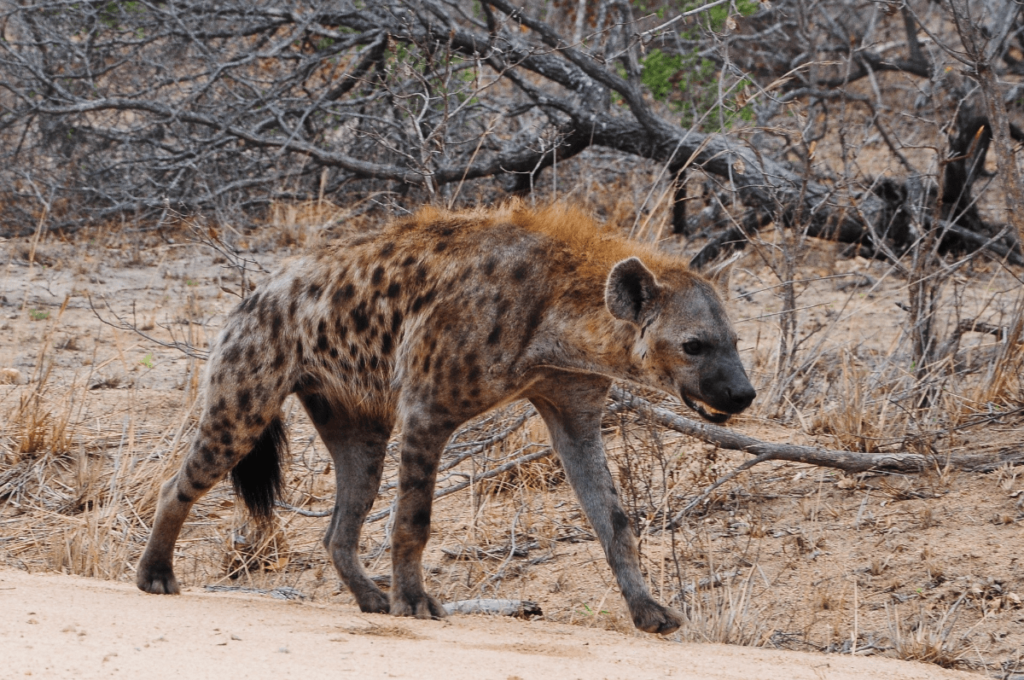
- Bite Force: 1,100 PSI (7,600 Newtons)
- Habitat and Diet: Spotted hyenas are found in sub-Saharan Africa, primarily in savannas, grasslands, and woodlands. They are carnivorous scavengers, often feeding on the carcasses of dead animals, but they also hunt in packs to bring down larger prey.
- Why is Their Bite So Strong?: Hyenas possess exceptionally strong jaws with a unique bone-crushing capability. Their bite force allows them to break down bones and digest high-calcium content, making them efficient scavengers and hunters.
Animal #14: Grey Wolf
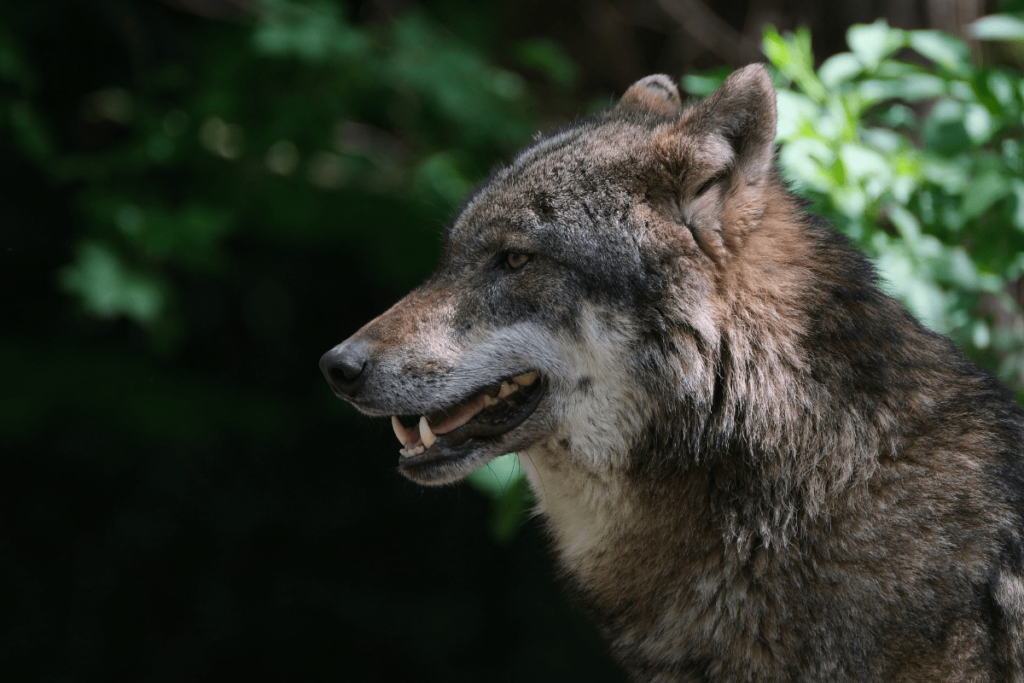
- Bite Force: 1200 PSI (8,300 N)
- Habitat and Diet: Grey wolves are distributed across North America, Europe, and Asia, living in diverse environments such as forests, tundras, and grasslands. They primarily hunt ungulates and smaller mammals.
- Why is Their Bite So Strong?: Grey wolves have powerful jaw muscles and sharp teeth that enable them to bring down prey and consume meat efficiently. Their bite force is adapted for gripping and tearing flesh.
Check out The Ranks of Wolf Packs
Animal #13: Polar Bear & Grizzly Bear
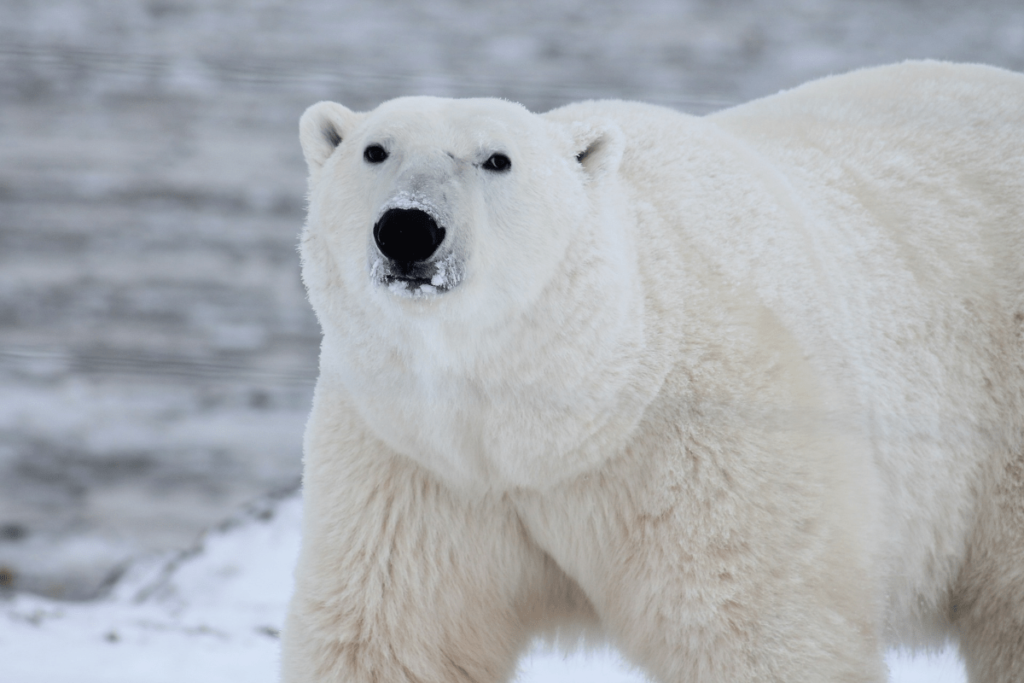
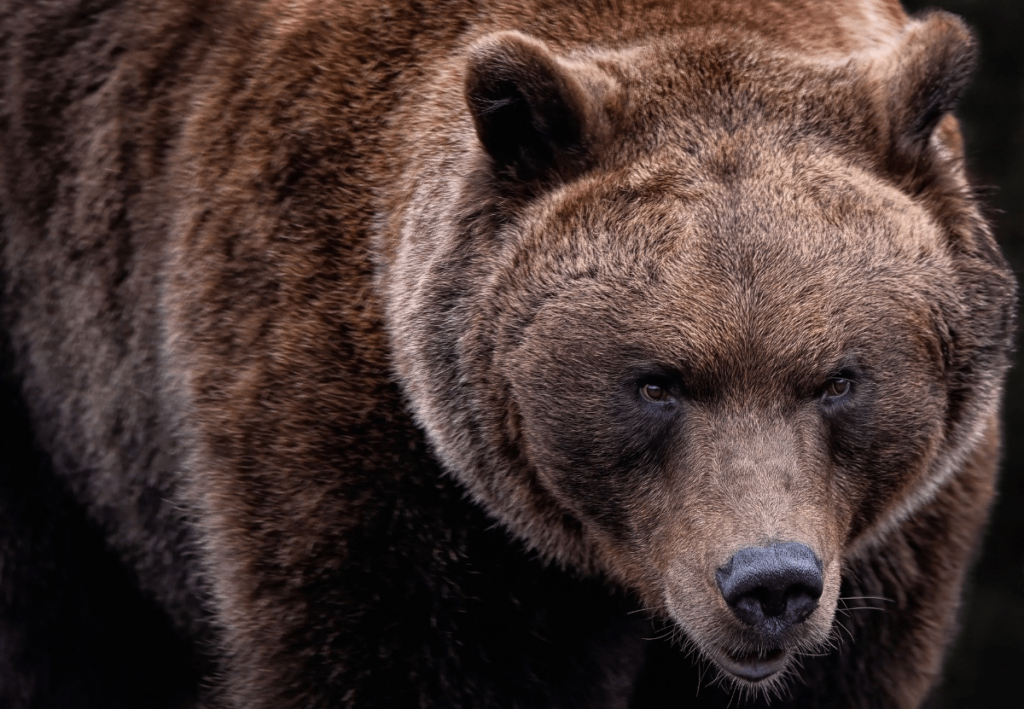
- Bite Force: 1,200 PSI (8,450 Newtons)
- Habitat and Diet: Polar bears are native to the Arctic Circle, encompassing the Arctic Ocean, its surrounding seas, and surrounding landmasses. They primarily hunt seals but are also known to scavenge on whale carcasses. Grizzly bears are found in North America, primarily in forests, alpine meadows, and coastal areas. Their diet is omnivorous, consisting of fish, small mammals, berries, nuts, and roots.
- Why is Their Bite So Strong?: Polar bears have large, powerful jaws designed to pierce through the thick blubber of seals. Their strong bite is essential for their survival in the harsh Arctic environment, where food sources can be scarce. Grizzly bears have a robust skull and powerful jaw muscles that enable them to exert a strong bite force. This strength is crucial for tearing through flesh, breaking bones, and accessing nutrient-rich food sources like nuts and roots.
Animal #12: Gorilla
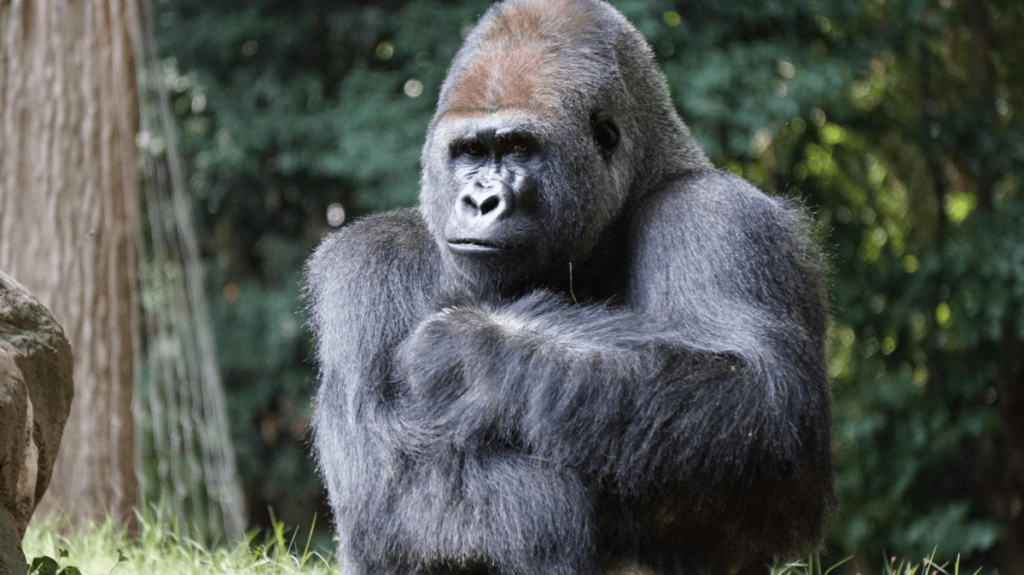
- Bite Force: 1,300 PSI (8,900 Newtons)
- Habitat and Diet: Gorillas are primarily found in the forests of central Africa. They are herbivores, consuming a diet rich in fruits, leaves, stems, and bamboo shoots.
- Why is Their Bite So Strong?: Gorillas have large molars and a strong jaw muscle structure, allowing them to chew through tough plant material. Their powerful bite is an adaptation to their fibrous diet.
Animal #11: Bull Shark
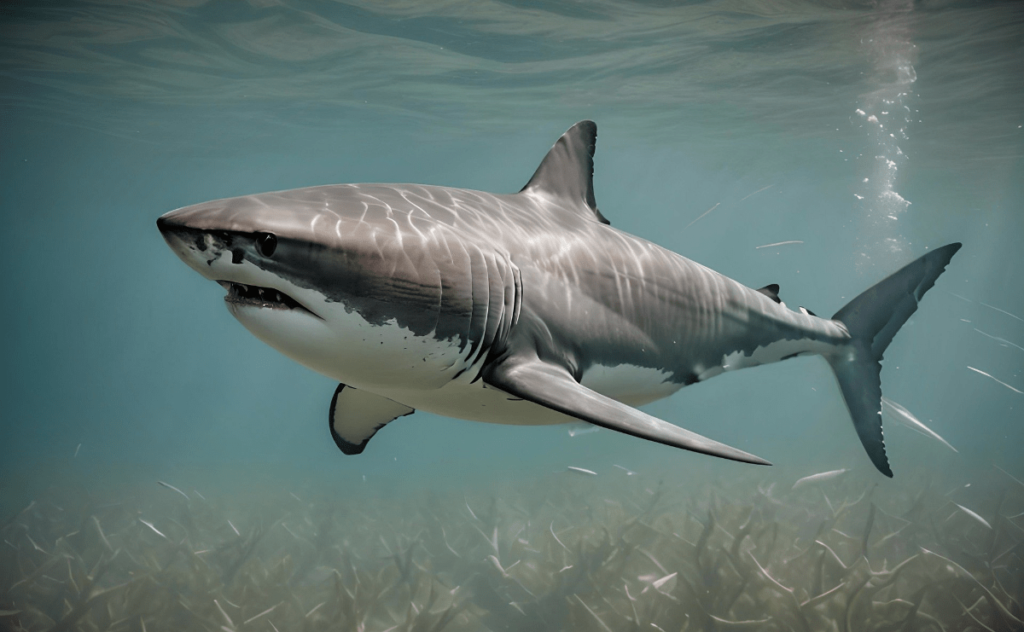
- Bite Force: 1,350 PSI (9,300 Newtons)
- Habitat and Diet: Bull sharks inhabit warm, shallow waters along coasts and in rivers. They have a diverse diet, preying on fish, dolphins, and even other sharks.
- Why is Their Bite So Strong?: Bull sharks have a robust jaw structure and sharp, serrated teeth designed for cutting through flesh. Their strong bite helps them capture and consume a wide variety of prey, including larger animals.
Animal #10: Jaguar

- Bite Force: 1,500 PSI (10,300 Newtons)
- Habitat and Diet: Jaguars are found in the rainforests of Central and South America. They are carnivores, preying on a wide range of animals, including deer, capybaras, and even caimans.
- Why is Their Bite So Strong?: Jaguars have the strongest bite relative to their size among big cats. Their powerful jaws can pierce through the skulls of their prey, a unique hunting adaptation among felines.
Here is a List of Top 10 Largest Cat Species in the World
Animal #9: Tiger

- Bite Force: 1,525 PSI (10,580 N)
- Habitat and Diet: Tigers inhabit various environments across Asia, including rainforests, grasslands, and mangroves. They are solitary hunters with a diet that includes large mammals such as deer, wild boar, and occasionally smaller animals.
- Why is Their Bite So Strong?: Tigers possess strong jaw muscles and large canine teeth that allow them to deliver a powerful bite capable of penetrating thick hides and crushing bones.
Animal #8: Lion
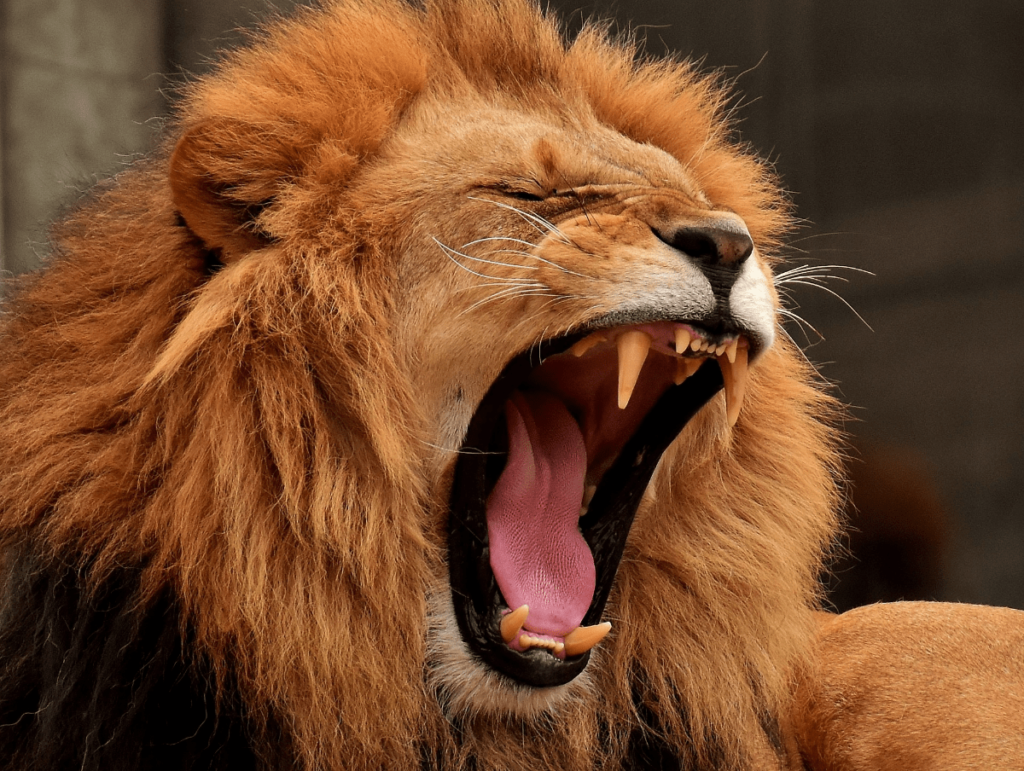
- Bite Force: 1,768 PSI (12,240 N)
- Habitat and Diet: Lions are found in savannas, grasslands, and open woodlands across Africa. They are apex predators, primarily hunting large ungulates such as zebras, wildebeests, and buffaloes.
- Why is Their Bite So Strong?: Lions have powerful jaw muscles and large, sharp teeth designed for gripping and tearing flesh. Their bite force is crucial for subduing prey and defending their territory.
Check out Why Is the Lion the King of the Jungle
Animal #7: Hippopotamus
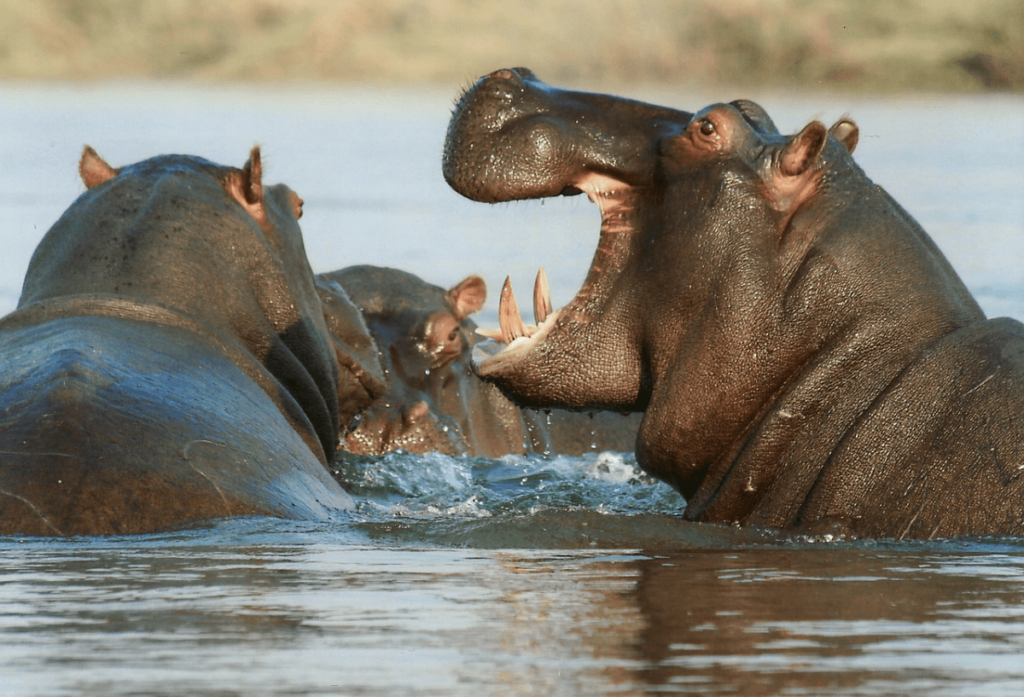
- Bite Force: 1,800 PSI (12,500 Newtons)
- Habitat and Diet: Hippos are found in sub-Saharan Africa, mainly inhabiting rivers, lakes, and swamps. They are herbivores, feeding primarily on grass.
- Why is Their Bite So Strong?: Despite being herbivores, hippos have incredibly powerful jaws with large canines and incisors. Their bite force is used primarily for defense and dominance in social hierarchies, especially during fights with other hippos.
Animal #6: American Alligator

- Bite Force: 2,125 PSI (14,643 Newtons)
- Habitat and Diet: American alligators are found in freshwater environments, such as ponds, marshes, and rivers, primarily in the southeastern United States. They are carnivorous, preying on fish, birds, and small mammals.
- Why is Their Bite So Strong?: American alligators have powerful jaws and muscles that enable them to exert significant force when capturing prey. Their bite is designed to hold and drown their prey before consumption.
You can read this article to understand the Difference Between Alligator vs Crocodile
Animal #5: Mako Shark (Shortfin)
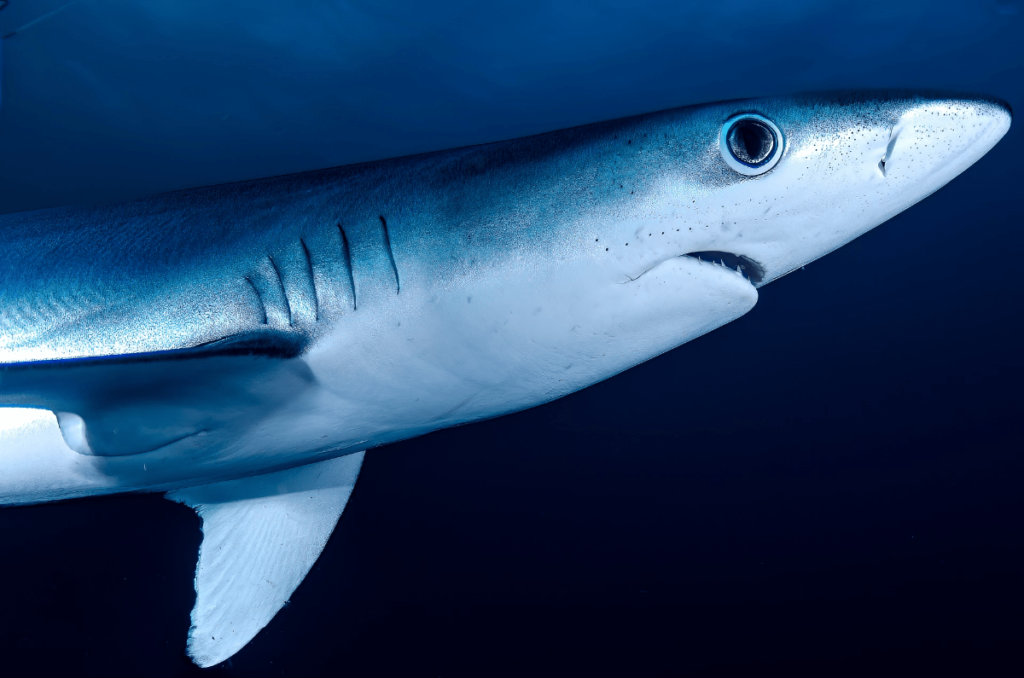
- Bite Force: 3,000 PSI (20,684 Newtons)
- Habitat and Diet: Mako sharks are found in temperate and tropical oceans worldwide. They are fast predators, preying on fish, squid, and occasionally other sharks.
- Why is Their Bite So Strong?: Mako sharks have sharp, serrated teeth and strong jaw muscles, allowing them to deliver a powerful bite that can swiftly incapacitate their prey.
Animal #4: Saltwater Crocodile

- Bite Force: 3,700 PSI (25,500 Newtons)
- Habitat and Diet: Saltwater crocodiles are found in Southeast Asia, Australia, and the eastern coast of India. They inhabit rivers, estuaries, and coastal regions. Their diet consists of fish, birds, and mammals, including large prey like water buffalo.
- Why is Their Bite So Strong?: Saltwater crocodiles have one of the most powerful bites in the animal kingdom. Their jaws are equipped with strong muscles that close with incredible force, designed to seize and hold onto prey with no chance of escape.
Animal #3: Great White Shark
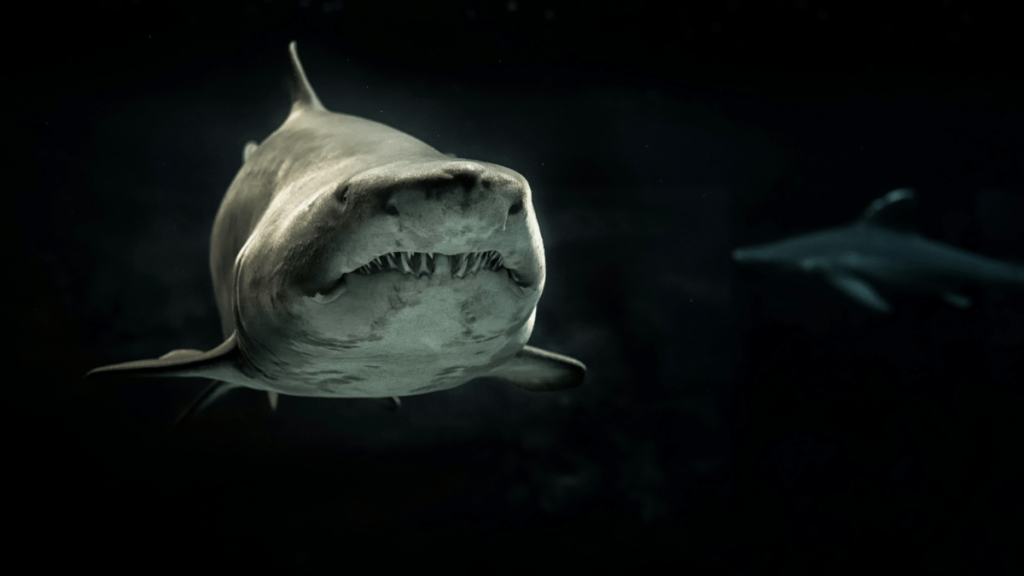
- Bite Force: 4,000 PSI (27,600 Newtons)
- Habitat and Diet: Great white sharks are found in coastal waters all over the world, particularly in the United States, South Africa, and Australia. They are apex predators, feeding on fish, seals, and even whales.
- Why is Their Bite So Strong?: Great white sharks have large, conical teeth and a muscular jaw that allows them to exert tremendous pressure. Their bite is designed to tear through flesh and bone, making them one of the most feared predators in the ocean.
Animal #2: Nile Crocodile

- Bite Force: 5,000 PSI (34,473 Newtons)
- Habitat and Diet: Nile crocodiles are found throughout sub-Saharan Africa, inhabiting rivers, lakes, and marshlands. They are apex predators, feeding on fish, birds, and mammals.
- Why is Their Bite So Strong?: The Nile crocodile’s jaws are designed for clamping down with immense pressure, preventing prey from escaping. Their teeth are conical and designed to grip rather than chew, making their bite particularly lethal.
What Animal Has the Strongest Bite Force?
Animal #1: Orca (Killer Whale)
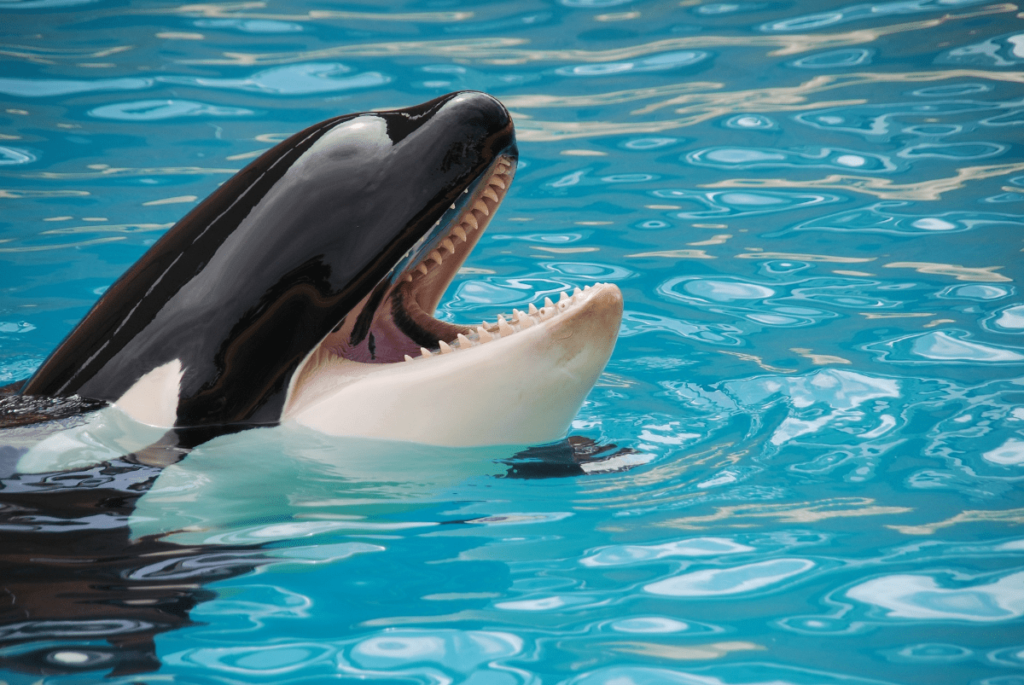
- Bite Force: 19,000 PSI (130,000 N)
- Habitat and Diet: Orcas are found in oceans worldwide, from the polar regions to tropical seas. They are top predators, feeding on fish, seals, and even large whales.
- Why is Their Bite So Strong?: Orcas have large, conical teeth and powerful jaws that enable them to exert immense pressure. Their bite force is among the strongest, allowing them to tackle a wide range of prey, including some of the ocean’s largest and most challenging creatures.
Strong Bite Force is one of the Fascinating Facts About Orca Hunting
Strongest Animal Bite:
| No | Animal Name | Bite Force (PSI) | Bite Force (Newtons) | Body Length (meters/feet) | Body Height (meters/feet) | Average Weight (kg/lbs) |
|---|---|---|---|---|---|---|
| 15 | Spotted Hyena | 1,100 | 7,600 | 1.4 – 1.6 m (4.6 – 5.2 ft) | 0.8 m (2.6 ft) | 45 – 80 kg (99 – 176 lbs) |
| 14 | Grey Wolf | 1,200 | 8,300 | 1.0 – 1.6 m (3.3 – 5.2 ft) | 0.6 – 0.9 m (2 – 3 ft) | 30 – 50 kg (66 – 110 lbs) |
| 13 | Polar Bear | 1,200 | 8,450 | 2.4 – 3.0 m (7.9 – 9.8 ft) | 1.2 – 1.5 m (4 – 5 ft) | 350 – 700 kg (770 – 1,540 lbs) |
| 13 | Grizzly Bear | 1,200 | 8,450 | 1.8 – 2.7 m (5.9 – 8.9 ft) | 1.0 – 1.3 m (3.3 – 4.3 ft) | 270 – 635 kg (600 – 1,400 lbs) |
| 12 | Gorilla | 1,300 | 8,900 | 1.4 – 1.8 m (4.6 – 5.9 ft) | 1.4 – 1.7 m (4.6 – 5.6 ft) | 140 – 200 kg (310 – 440 lbs) |
| 11 | Bull Shark | 1,350 | 9,300 | 2.4 – 3.0 m (8 – 10 ft) | 1.2 – 1.5 m (4 – 5 ft) | 90 – 230 kg (200 – 510 lbs) |
| 10 | Jaguar | 1,500 | 10,300 | 1.2 – 1.8 m (4 – 6 ft) | 0.6 – 0.9 m (2 – 3 ft) | 56 – 96 kg (123 – 211 lbs) |
| 9 | Tiger | 1,525 | 10,580 | 2.5 – 3.3 m (8.2 – 10.8 ft) | 0.9 – 1.2 m (3 – 4 ft) | 180 – 320 kg (397 – 705 lbs) |
| 8 | Lion | 1,768 | 12,240 | 2.4 – 3.0 m (7.9 – 9.8 ft) | 1.0 – 1.2 m (3.3 – 4 ft) | 150 – 250 kg (331 – 551 lbs) |
| 7 | Hippopotamus | 1,800 | 12,500 | 3.0 – 5.0 m (9.8 – 16.4 ft) | 1.5 – 1.8 m (4.9 – 5.9 ft) | 1,500 – 3,200 kg (3,307 – 7,055 lbs) |
| 6 | American Alligator | 2,125 | 14,643 | 3.0 – 4.0 m (9.8 – 13.1 ft) | 0.5 – 0.7 m (1.6 – 2.3 ft) | 250 – 450 kg (551 – 992 lbs) |
| 5 | Mako Shark | 3,000 | 20,684 | 2.8 – 3.5 m (9.2 – 11.5 ft) | 1.0 – 1.2 m (3.3 – 4 ft) | 130 – 230 kg (287 – 507 lbs) |
| 4 | Saltwater Crocodile | 3,700 | 25,500 | 4.0 – 6.0 m (13.1 – 19.7 ft) | 1.0 – 1.5 m (3.3 – 4.9 ft) | 500 – 1,000 kg (1,102 – 2,205 lbs) |
| 3 | Great White Shark | 4,000 | 27,600 | 4.5 – 6.0 m (14.8 – 19.7 ft) | 1.5 – 2.0 m (4.9 – 6.6 ft) | 500 – 1,100 kg (1,102 – 2,425 lbs) |
| 2 | Nile Crocodile | 5,000 | 34,473 | 4.5 – 6.0 m (14.8 – 19.7 ft) | 1.0 – 1.5 m (3.3 – 4.9 ft) | 225 – 750 kg (496 – 1,653 lbs) |
| 1 | Orca (Killer Whale) | 19,000 | 130,000 | 7.0 – 9.0 m (23 – 30 ft) | 1.8 – 2.4 m (5.9 – 7.9 ft) | 3,600 – 6,000 kg (7,936 – 13,228 lbs) |
Pre-Historic Animals Bite Force.
Animal #1: Tyrannosaurus Rex (Extinct)

- Bite Force: 8,000 PSI (53,700 N)
- Habitat and Diet: Tyrannosaurus rex roamed North America during the Late Cretaceous period. As a carnivorous apex predator, it fed on large dinosaurs and possibly scavenged on carcasses.
- Why is Their Bite So Strong?: The T. rex had massive, robust jaws and teeth designed to crush bone. Its bite force was a critical adaptation that allowed it to dominate its ecosystem as one of the most fearsome predators of its time.
Animal #2: Megalodon (Extinct)

- Bite Force: 40,000 PSI (266,900 N)
- Habitat and Diet: Megalodons were ancient, massive sharks that lived during the Cenozoic Era, primarily in warm, coastal waters. They were apex predators, preying on large marine animals, including whales.
- Why is Their Bite So Strong?: Megalodons had enormous jaws with rows of serrated teeth, capable of crushing bones and tearing through thick flesh. Their bite force is estimated to be among the highest of any animal, living or extinct.
Prehistoric animals like the Tyrannosaurus rex and Megalodon had bite forces that dwarfed those of modern creatures, showcasing an extreme level of evolutionary adaptation. The Tyrannosaurus rex, with an estimated bite force exceeding 8,000 PSI, could crush bones and tear through large prey with its robust jaw muscles and reinforced skull.
Similarly, the Megalodon, an ancient giant shark, boasted an astonishing bite force of up to 40,000 PSI, allowing it to prey on massive marine animals like whales. In comparison, today’s largest predators, such as the saltwater crocodile and great white shark, have bite forces of around 3,700 PSI and 4,000 PSI, respectively. These prehistoric giants highlight the extraordinary power of bite force that ancient predators developed to dominate their environments, setting an impressive benchmark for natural adaptations in the animal kingdom.
Curious Question: Which reptile, other than the crocodile, has a fearsome bite?
The alligator snapping turtle, with a bite force of 1,000 PSI, can snap through bones and even break broomsticks in a single bite.
Did You Know: Which primate has the strongest bite force?
The gorilla! Its bite force of 1,300 PSI helps it break through tough plant material like bamboo, making it the primate with the strongest bite.
Frequently Asked Questions:
Q: What is the lion bite force?
A: The bite force of a lion is approximately 1,768 PSI (12,240 N).
Q: What is the hyena bite force?
A: The bite force of a hyena is about 1,100 PSI (7,645 N).
Q: What is the bite force of a human?
A: The bite force of a human is around 160 PSI (1,100 N).
Q: What is the crocodile bite force?
A: The bite force of a crocodile, specifically saltwater crocodiles, is about 3,700 PSI (24,800 N).
Q: What is the hippo bite force?
A: The bite force of a hippo is approximately 1,800 PSI (12,500 N).
Q: What is the Kangal bite force?
A: The bite force of a Kangal is about 743 PSI (5,100 N).
Q: What is the strongest bite force?
A: The strongest bite force is found in the Megalodon, with an estimated bite force of up to 40,000 PSI (266,900 N).
Q: What is the alligator bite force?
A: The bite force of an alligator is approximately 2,980 PSI (20,800 N).
Q: What is the bite force of a German Shepherd?
A: The bite force of a German Shepherd is around 238 PSI (1,600 N).
Q: What is the bite force of a lion?
A: The bite force of a lion is approximately 1,768 PSI (12,240 N). (Note: This is repeated for emphasis.)
Q: What is the bite force of a pitbull?
A: The bite force of a pitbull is around 235 PSI (1,600 N).
Q: What is the bite force of an alligator snapping turtle?
A: The bite force of an alligator snapping turtle is approximately 1,000 PSI (7,000 N).
Q: What dog has the strongest bite force?
A: The bite force of the Kangal is the strongest among dogs, at about 743 PSI (5,100 N).
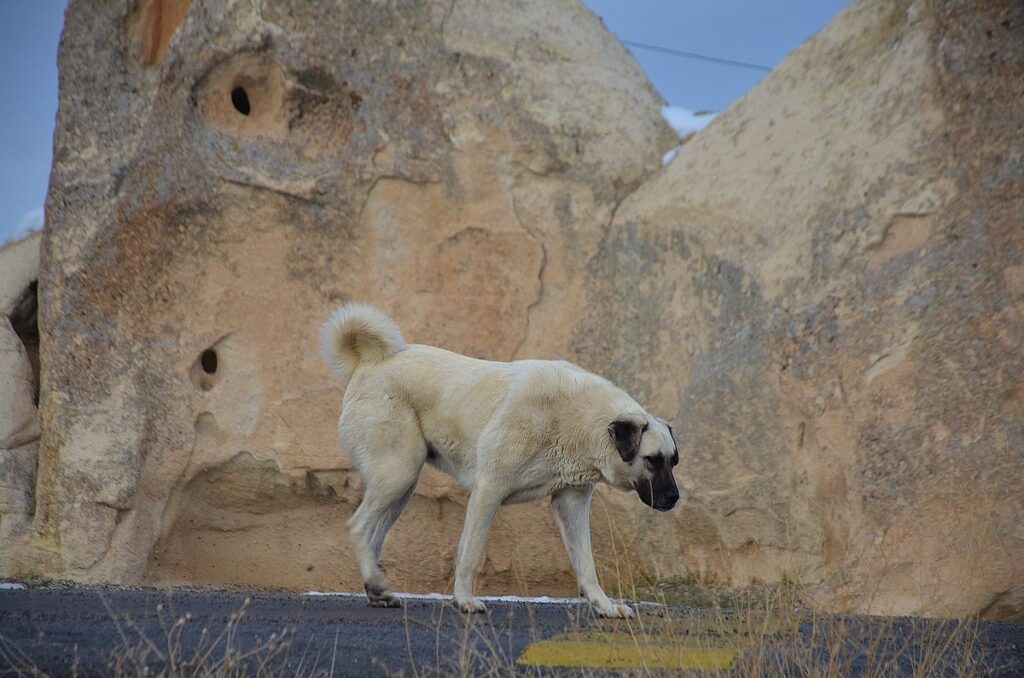
The Evolution of Strong Bites
Evolutionary Perspective: The Development of Powerful Jaws
The evolution of strong bites is a fascinating example of how animals adapt to their environments and ecological niches. Over millions of years, various species have evolved powerful jaws and bite forces as a result of natural selection. These adaptations are crucial for their survival and success in their respective habitats. For apex predators, such as the great white shark or the saltwater crocodile, a powerful bite has been essential for capturing and subduing prey, while herbivores like hippos have developed strong bites to defend against threats.
In the evolutionary timeline, animals with the most powerful bites often have traits that have been honed through millions of years of adaptation. For instance, early ancestors of today’s crocodiles and sharks had progressively stronger bites as they adapted to larger and more formidable prey. This evolutionary pressure led to the development of jaw structures and muscle configurations that could deliver substantial force.
Did You Know: Which bird has a bite force stronger than some mammals?
The harpy eagle! Its talon pressure can reach 500 PSI, making it strong enough to crush the bones of monkeys and sloths.
Surprising Fact: What prehistoric animal had the most powerful bite?
Tyrannosaurus rex has a Bite Force of 8,000 PSI. Even the extinct Megalodon had an estimated bite force of 40,000 PSI, far surpassing any modern animal, allowing it to dominate ancient seas.
Adaptations: How Animals Achieve Their Powerful Bites
Several key adaptations contribute to the impressive bite force of these animals:
- Jaw Strength and Muscle Development: One of the most significant adaptations is the development of powerful jaw muscles. Animals like the saltwater crocodile and the jaguar have robust masseter and temporalis muscles, which provide the force needed to close their jaws with tremendous power. These muscles are well-developed to support their strong bite.
- Tooth Structure: The structure and arrangement of teeth play a crucial role in an animal’s bite force. For example, the great white shark has serrated teeth designed to slice through flesh and bone, while the jaguar’s teeth are adapted for piercing and crushing. The morphology of teeth can significantly influence how effectively an animal can apply and utilize bite force.
- Jaw Mechanics: The overall mechanics of the jaw are another crucial factor. Many animals with powerful bites have evolved specific jaw designs that maximize the force exerted by their bite. For instance, crocodiles have a strong, V-shaped jaw structure that allows them to apply tremendous pressure. Similarly, the design of a lion’s jaws enables it to generate significant force while maintaining precision.
- Bone Density and Jaw Attachment: Strong bite force is also supported by the density and structure of jaw bones and the attachment of muscles. In animals like the Nile crocodile, dense bones and strong muscle attachments contribute to the ability to exert immense pressure.
Overall, these evolutionary adaptations highlight how natural selection has shaped the bite force of various species. Animals with the strongest bites have developed specialized features that allow them to thrive in their environments, whether by hunting, defending themselves, or foraging.
Conclusion:
In conclusion, bite force is a crucial aspect of survival for many animals, playing a key role in hunting, defense, and feeding. The sheer power behind the jaws of these creatures is a testament to their evolutionary adaptations, allowing them to dominate their environments and thrive in the wild. From the bone-crushing jaws of crocodiles to the immense pressure exerted by orcas, each animal’s bite force reflects its unique lifestyle and survival strategies.
Understanding the significance of bite force gives us greater insight into the natural world, showcasing the incredible diversity and specialization that exists within the animal kingdom. Whether it’s the top predators of today or the prehistoric giants of the past, the power of the bite remains one of nature’s most formidable weapons.

